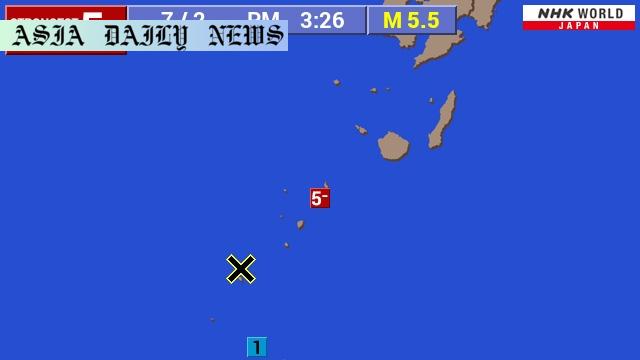Earthquake: A magnitude 5.5 quake struck Kagoshima Prefecture in Japan, with no tsunami threat reported by the Japan Meteorological Agency.
An earthquake of 5.5 magnitude struck Kagoshima Prefecture, Japan.
Japan Meteorological Agency confirmed no tsunami threat.
The quake registered a lower 5 intensity on the Japanese scale.

An Overview of the Kagoshima Earthquake
On Wednesday at 3:26 p.m. local time, a magnitude 5.5 earthquake shook Japan’s southwestern region, specifically Kagoshima Prefecture. The Japan Meteorological Agency (JMA) reported an intensity level of ‘lower 5’ on Japan’s seismic scale, which ranges from 0 to 7. Despite the strength of the quake, officials confirmed that there was no tsunami threat accompanying the seismic event. This news comes as a relief, particularly for residents in coastal regions.
The earthquake’s epicenter was located inland, reducing the likelihood of generating a tsunami. Kagoshima residents experienced noticeable shaking, with reports of rattling windows, swaying furniture, and tremors lasting for several seconds. Thankfully, there have been no immediate reports of significant injuries or property damage, although assessments are ongoing.
Earthquake Preparedness in Japan
Japan, situated along the Pacific Ring of Fire, experiences frequent seismic activity due to its position at the convergence of several tectonic plates. Earthquake preparedness is deeply ingrained in Japanese society. Schools, businesses, and communities often hold regular emergency drills, ensuring residents know how to respond during seismic events. Sophisticated early warning systems like J-Alert further enhance the nation’s ability to mitigate risks associated with earthquakes.
In Kagoshima Prefecture, located on Kyushu Island, seismic activity is not uncommon. The region’s proximity to active volcanos, such as Mount Sakurajima, adds an additional layer of geological complexity. Authorities remain vigilant, closely monitoring aftershocks or possible increases in volcanic activity following seismic events.
Global Implications of Japan’s Safety Culture
The swift and precise response from JMA to the Kagoshima earthquake highlights Japan’s commitment to public safety. Countries worldwide can learn from Japan’s pioneering advancements in earthquake-resistant infrastructure, urban planning, and disaster preparedness training. These measures not only save lives but also minimize economic losses in the long term.
While earthquakes cannot be prevented, the Kagoshima incident proves that proactive measures can significantly cushion their impact. As nations continue to face natural disasters, Japan’s experience serves as both a lesson and a source of inspiration for building resilience against such unpredictable phenomena.
Commentary
Reflection on the Kagoshima Earthquake
News of the magnitude 5.5 earthquake in Kagoshima Prefecture reinforces just how important disaster preparedness is in today’s world. While the tremors caused unease among residents, the lack of a tsunami threat and the apparent absence of significant damage or injuries indicate that Japan continues to prioritize safety and resilience in the face of natural disasters. This response exemplifies a nation that has learned from its history and implemented systems to protect its people.
A Testament to Japan’s Preparedness
Japan’s advanced early warning systems and strict building codes are a testament to its commitment to safeguarding lives during seismic events. The fact that Kagoshima, a region no stranger to geological activity, weathered the quake with minimal disruption speaks volumes about the effectiveness of these measures. Reflecting on this, other countries prone to seismic activity should consider adopting similar policies.
Learning from Japan’s Experience
Globally, the quake serves as a reminder of nature’s unpredictability—but also humanity’s ingenuity. Japan’s investment in safety, education, and technology showcases how proactive efforts can mitigate even the most sudden disasters. This event in Kagoshima is not just a story of resilience; it is a call for countries worldwide to evaluate their preparedness and improve where necessary. Moving forward, we all have much to learn from Japan’s efforts in embracing the realities of its geographic location while prioritizing the wellbeing of its people.


